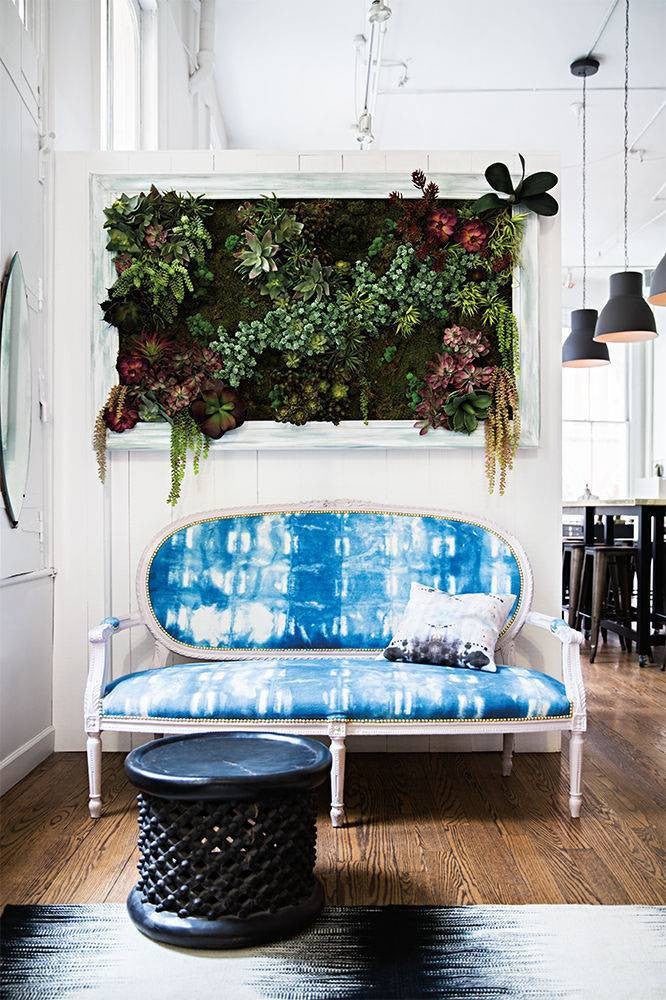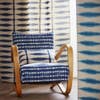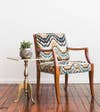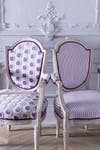9 Tips for Your Next Reupholstery Project
Here’s how to find the perfect fabric for your vintage chair or sofa.
Published Nov 27, 2016 5:00 AM
We may earn revenue from the products available on this page and participate in affiliate programs.
Ready to reupholster a vintage flea market find or the loveseat you inherited from Grandma? Good bones and quality craftsmanship are critical for a successful reupholstery project, but so is the fabric you choose. And browsing through bright solids, bold patterns, and subtle textures is often the best part of the project. However, it can be tricky to find a textile that updates the piece and also respects its history and original design intentions.
Some patterns can be too loud and quickly overwhelm a chair or chaise. Some neutral textures can be too subtle, leaving a sofa feeling dowdy and uninteresting. But the right fabric can modernize a chair and bring out its best qualities. Here’s how to choose.
The Era
Look to the era of creation for inspiration, but don’t be too faithful. Victorian chairs don’t have to be upholstered in pretty pink flowers. In fact, the piece will likely look better in an abstracted, oversized floral that only references a typical Victorian look.
It can be tempting to put an Eames fabric on a Mid-Century lounger, but instead consider a pattern with a graphic, Mid-Mod feel in an updated colorway (think canary yellow or warm gray instead of mustard or teal).
Try a graphic black and white Greek Key on a traditional chair instead of a predictable gold and white stripe. Using subtle references to history will ensure your frame won’t feel stuck in another era.
The Space
Want your reupholstery project to be the center of attention? If so, consider what surrounds it. If your home is clean and modern, a carved antique chair in a traditional floral will add an unexpected, eclectic vibe. The same chair in a traditional living room will be bland. Instead, opt for a more adventurous look in electric colors or modern patterns.
The Lines
The lines of your chair or sofa can be an excellent idea generator for pattern selection. Stand back several feet, and look at the piece from all sides. A pattern that mimics the sharply angled line of a leg or the curve of a back will work well. Look for S curves on Queen Anne style cabriole legs or dramatically canted backs on Art Deco club chairs. Lines can feel soothing and delicate or dynamic and nervous. Find that energy in a textile, and your reinvented chair will feel harmonious and connected.
The Detail
Look closely—decorative elements can inspire fabric. A leafy scroll on a Rococo chaise will be easy to replicate in a weave or print and will coordinate perfectly. Art Deco, Aesthetic Movement and Neoclassical pieces are flush with inlays and incised designs ranging from flowers and swags to wheels and polka dots. A small accent on a leg or arm can be repeated, blown up, or abstracted on the fabric.
The Form
Consider the overall shape of your chair or chaise. Is it soft and rounded, angular and upright, or stout and a bit squat? A fragile side chair with long, thin legs will feel more at home in a delicate, light pattern than a hefty plaid or heavy texture. However, a classic club chair or large chesterfield that sits low and wide will feel quite natural in the same tartan.
The Frame Finish
Don’t forget about the color of your frame. An exposed frame may dictate the final effect of your project. A pale and airy fabric will feel dramatically different against a whitewashed oak or a dark mahogany. A chrome or stainless steel chair will make a cool fabric colder. A painted wood will feel more flat and graphic than a stained wood with lots of graining. If you are not re-finishing the frame, be sure to look at your fabric with the frame before your final decision.
The Formality
If you inherited a formal set of Bergeres from a beloved aunt, and your home has a decidedly bohemian air, you may feel at a loss on how to integrate the family heirlooms. Don’t despair: Formality can be changed. A rigid piece transforms with a playful casual fabric and a lick of paint. Think ikats, bright solid cottons or oversized abstracts. While your aunt might not approve, at least the chairs will remain in the family!
The Scale
Large scale prints are tempting; they easily add a jolt of modernity to almost any chair. However, be mindful of your fabric repeat, especially when buying fabric online. It can be hard to discern the scale in photos. If the pattern does not lay out well on your chair, you may lose the impact. Consider how it will sit on all parts of the chair, paying particular attention to smaller areas like the arms. Be sure a central medallion or flower will fit on the seat and back in a pleasing configuration.
The Personality
Does your chair feel playful, refined, or just a bit cutesy? If all else fails, go with your gut. Furniture often exudes personality if you live with it for a while. Consider its spirit and find a fabric that speaks to you, the frame and your space.










